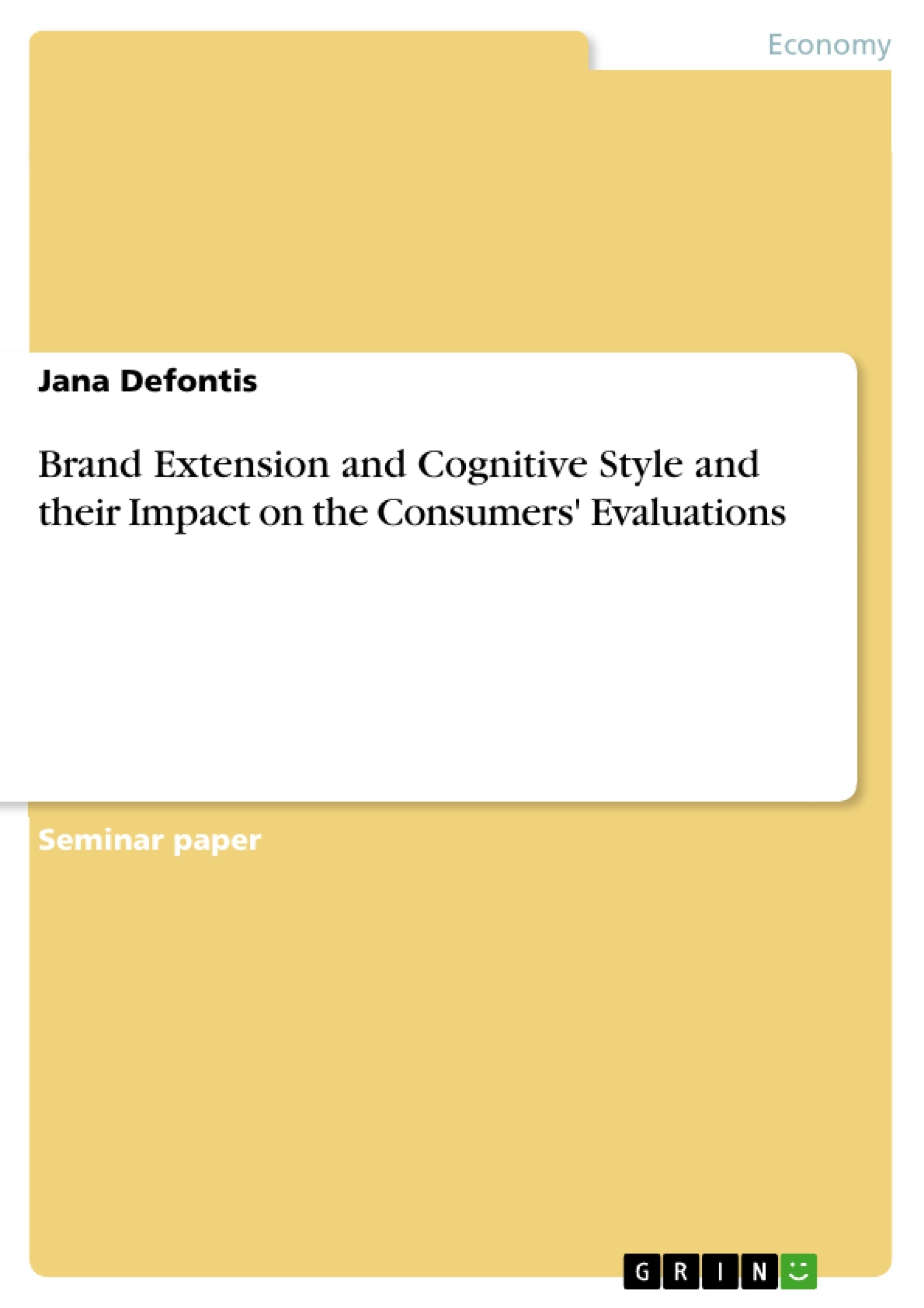The purpose of this seminar work is to give an overview of existent research findings on brand extension and cognitive style and to examine what impact style of thinking has on consumers evaluations of brand extensions.
Brand extension constitutes a common marketing strategy for entering into new segments and leveraging brand equity by expanding a brand, both, within and beyond the parent brand's product category. This strategy is often employed by management for leveraging existing brand beliefs and the overall image of the parent brand towards the newly launched product and thereby it is saving expenses with respect to measures for market launch considering advertising or price promotions, for example. Considerable effort in research has been conducted in exploring and understanding the success factors of brand extensions, with brand extension fit being identified as one of the main drives for an extension to succeed. In this context, a high brand elasticity is likely to result in more favorable evaluations for brand extensions in distant product categories. However, these findings cannot be generalized. Instead, it was found that the brand concept of the parent brand can significantly influence the elasticity and thus also the evaluation of the brand extension . In this respect, a distinction is generally made between two different brand concepts, namely prestige and functional.
Inhaltsverzeichnis (Table of Contents)
- Introduction
- Conceptual Framework
- Analytic versus Holistic Thinking
- Brand Extension
- Characteristics of Brand Extension
- Prestige Versus Functional Brand Concepts
- Cultural Differences and Style of Thinking
- The Role of Thinking Style in Consumers Evaluation of Brand Extension Fit
- Differences in Style of Thinking and Consumer's Evaluations of Brand Extension
- Joint Influences on Brand Elasticity
- Further Strategies for Increasing Acceptance for Distant Brand Extensions
- Cultural Differences in Brand Extension Evaluation
- Differences in Style of Thinking and Consumer's Evaluations of Brand Extension
- Conclusion
Zielsetzung und Themenschwerpunkte (Objectives and Key Themes)
This seminar work aims to provide an overview of existing research on brand extension and cognitive style, specifically examining the impact of thinking style on consumers' evaluations of brand extensions. The paper explores how differences in analytical and holistic thinking influence consumer perceptions of brand extensions, particularly within the context of cultural differences.
- The role of thinking style (analytic vs. holistic) in brand extension evaluation
- The influence of brand concepts (prestige vs. functional) on brand extension fit
- Cultural differences in cognitive styles and their impact on brand extension perception
- The relationship between cognitive style and consumer categorization tendencies
- Strategies for increasing acceptance of distant brand extensions based on thinking style
Zusammenfassung der Kapitel (Chapter Summaries)
- Introduction: The chapter introduces the concept of brand extension and its importance as a marketing strategy. It emphasizes the role of brand extension fit and brand elasticity in determining the success of extensions, while acknowledging the influence of the parent brand's concept (prestige vs. functional) and consumer cognitive styles (analytic vs. holistic).
- Conceptual Framework: This chapter delves into the distinction between analytic and holistic thinking styles, defining their characteristics and outlining key differences in categorization tendencies, connected versus discrete thinking, and object versus context-related focus. It highlights the influence of cultural background on thinking style, particularly the distinction between Eastern (holistic) and Western (analytic) cultures.
- The Role of Thinking Style in Consumers Evaluation of Brand Extension Fit: This chapter examines how differences in thinking styles influence consumer evaluations of brand extensions. It explores the impact of thinking style on brand elasticity and the implications for different brand concepts (prestige vs. functional). Additionally, the chapter discusses strategies for increasing acceptance of distant brand extensions based on thinking style.
Schlüsselwörter (Keywords)
Key terms and concepts explored in this work include brand extension, brand elasticity, brand fit, cognitive style, analytic thinking, holistic thinking, cultural differences, prestige brand, functional brand, categorization, connected thinking, and consumer evaluation.
- Citation du texte
- Jana Defontis (Auteur), 2019, Brand Extension and Cognitive Style and their Impact on the Consumers' Evaluations, Munich, GRIN Verlag, https://www.grin.com/document/915010



